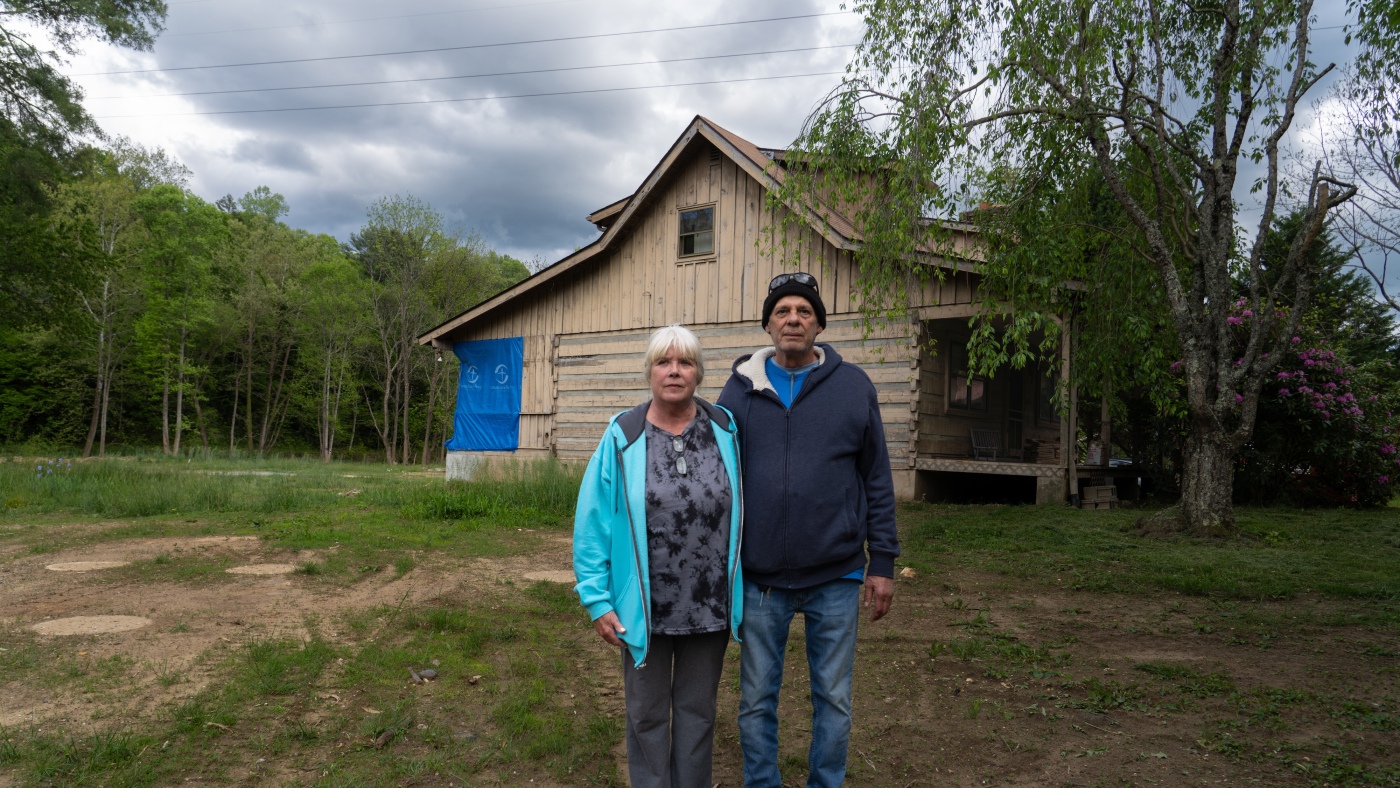Rising Waters: The Impact of Hurricane Helene on North Carolina Communities
In the aftermath of Hurricane Helene, the quiet town of Fairview, North Carolina, paints a stark picture of devastation. Once a serene area nestled near Asheville, the remnants of homes and livelihoods now serve as reminders of the storm’s fury.
FAIRVIEW, N.C. — Just outside of Asheville, Stuart and Jackie Pacheo stand amidst the rubble of what was once their home, swept away by the floods brought on by Hurricane Helene last September. The couple’s abode, once situated between a highway and a small creek, now lies in ruins, with only the foundation pillars remaining visible through the mud.
“We’re standing in what used to be the living room,” Mr. Pacheo recounts, as he describes the layout of their home of 30 years. The Pacheos, now looking at the remnants of their property, are joined by Mrs. Pacheo’s mother, whose house, though damaged, still stands.
As the Atlantic hurricane season approaches, meteorologists are intensifying their efforts to predict and warn about the most lethal aspect of hurricanes: freshwater flooding. With the onset of climate change, storms have increased in intensity and rainfall, posing significant risks to inland regions.
According to the National Hurricane Center, Hurricane Helene claimed at least 249 lives, with 94 fatalities resulting from rainfall flooding.
On the fateful night in September, the Pacheos were caught off guard. Despite prior experiences with flooding, they underestimated the storm’s impact. Mrs. Pacheo recalls being awakened by an emergency alert urging them to evacuate immediately due to rapidly rising waters.
“We grabbed what we could, and I tried to get my cat, but she wouldn’t come with me because there was so much water out here already. So she perished in my house,” Mrs. Pacheo shares with deep regret.
The couple sought refuge at Mrs. Pacheo’s mother’s house next door, only to watch their own home, cars, and possessions swept away by the flood. “We had water coming from all directions. It looked like a raging ocean,” she describes.
More than 100,000 homes in North Carolina suffered damage or were destroyed, some as far as 500 miles inland from where Helene made landfall in Florida. The storm’s flooding claimed numerous lives, leaving communities grappling with the aftermath.
Buncombe County’s director of communications, Lilian Govus, reflects on the challenges of conveying the storm’s severity ahead of time. “We all knew that a big storm was coming, but we weren’t quite able to grab the attention in the way that we had hoped,” she explains.
The River Arts District (RAD) in Asheville, known for its vibrant arts community, also bore the brunt of Hurricane Helene. Jeffrey Burroughs, president of the RAD, notes that despite preparations, the floodwaters reached unprecedented levels, damaging studios and artwork alike.
“The arts in Buncombe County, primarily Asheville, generates about $1-billion a year in sales,” says Burroughs. “We are an essential part, an important part of Asheville.”
In Mars Hill, a rural community near Asheville, Sarah Bivins and Barry Cooper witnessed their farm and possessions washed away by the torrent of Ivy Creek. Despite the destruction, they remain committed to restoring their land and livelihoods.
“You’re connected to thousands of years of wisdom, people learning how to live in cooperation with the land and hopefully improve it,” Cooper reflects, emphasizing their dedication to rebuilding.
Eight months after Helene’s devastation, Buncombe County still shows extensive signs of damage. Thousands remain displaced, struggling to rebuild or find new homes as another hurricane season looms.
“We were supposed to be a climate refuge,” Govus laments, pointing out the rapid changes in climate and the need for greater preparedness. The recent wildfires in the area have sparked renewed interest in readiness, even convincing Govus’s previously skeptical husband to prepare for future emergencies.
This article was originally written by www.npr.org






Be First to Comment